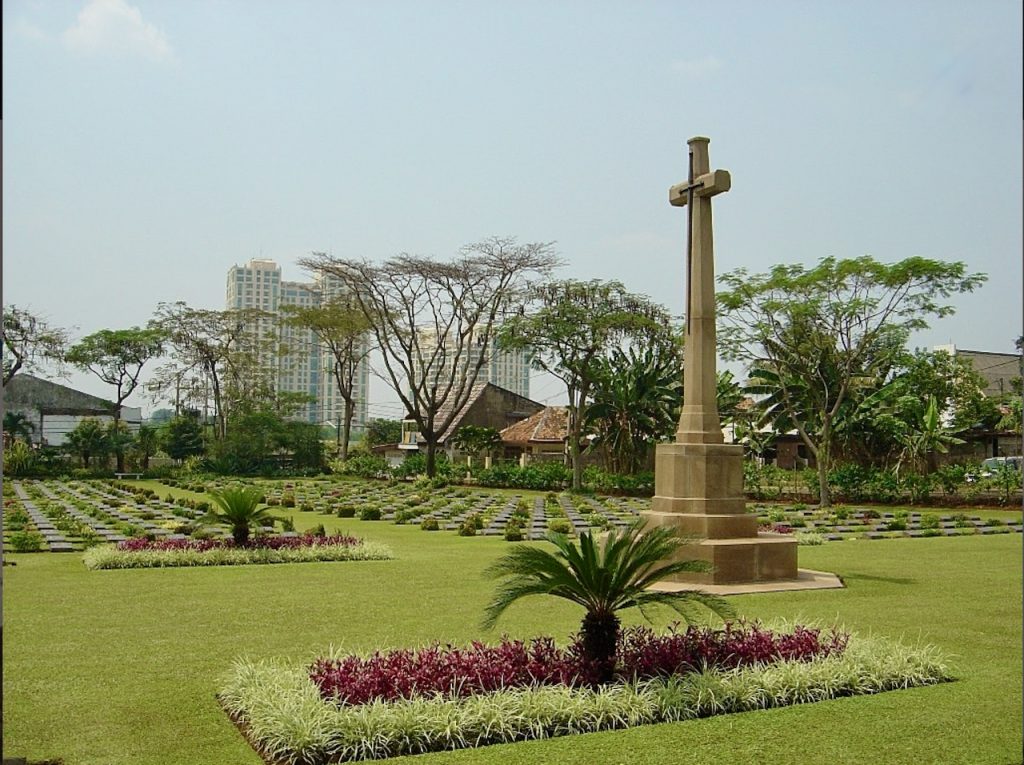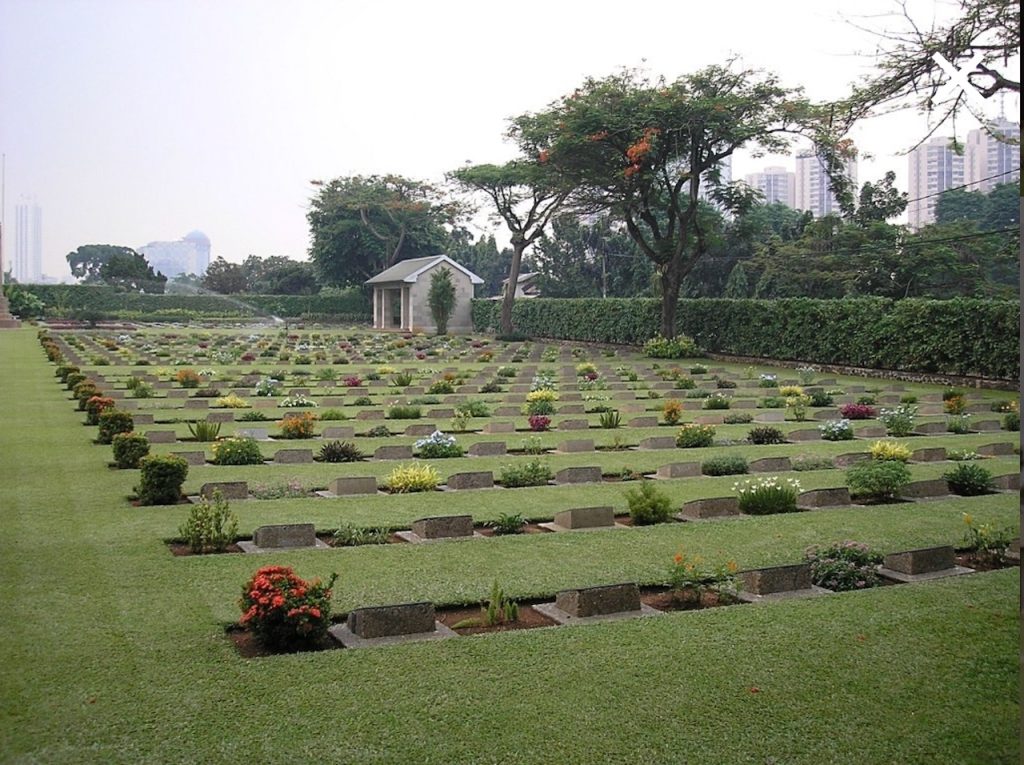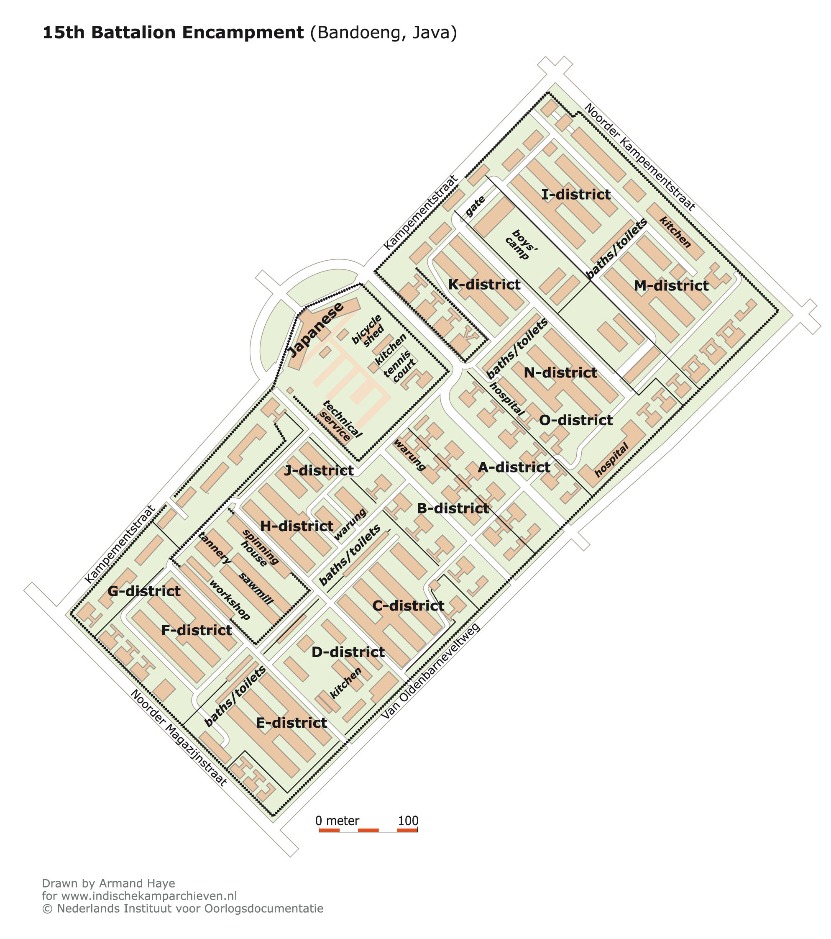Bandoeng, Bandung - Java

POW Camps Java listed below:
Makasura (Celebes)
Tanjung Priok POW camp, Tanjung Priok (Java)
Koan School, Batavia (modern Jakarta) (Java)
Glodok Gaol, Golodok, a suburb of Batavia (modern Jakarta) (Java)
Bicycle Camp, Batavia (modern Jakarta) (Java)
Bandung/Bandoeng (Java)
Tjideng
Ambarawa (Java)
Bangkong (Java)
Lampersari (Java)
There were numerous POW Camps at Bandoeng – many for civilians, women and children.
BANDOENG-TJIMAHI
The main POW Camp at Bandoeng was Camp No. 12 in the former 15th Depot Battalion Barracks at Kampenment Street Bandoeng. POWs from 2/3rd MG Battalion moved to this camp on 22nd June 1942. Any of those who had remained at large were, when captured, imprisoned in a concentration camp at Soekaboemi, (Doug Carter was one of these) and in June they were transferred to Tjimahi. This was presumably to concentrate all POWs on Western Java into one area. The Soekamiskin Prison (Maurice Caldwell was at this prison from 15th January 1942 to 5th February 1944) was for Dutch British, American, Ambonese and Mendonese POWs and Indonesian convicts.
Once the 1st Allied General Hospital was closed down the patients and staff were marched 6 miles from Bandoeng to a native prison, being the Landsop Camp at Tjimah. From here they were moved to No. 4 Camp which was possibly the 4th Battalion Barracks at Tjimahi, before again being moved back to Camp No. 12, the former Dutch 15th Depot Battalion Barracks at Bandoeng a beautiful collection of buildings and facilities.
Reference to https://www.indischekamparchieven.nl/
There were about 1,000 men each of Australian, British, Dutch, Ambonese and Menardonese troops at Bandeong Camp. For most POWs here it would remain memorable in the most positive of ways – the climate remains much the same temperature throughout the year – 22 degrees. No very hot nor very cold seasons with rainfall spread throughout the year. The rains are invariably heavy monsoonal showers accompanied by thunder and lightning. The mornings would be sunny and bright, the afternoons rainy and then the evenings clear and pleasant.
There were international soccer games every night and regular athletic carnivals. The camp contained an enormous collection of talented and artistic prisoners who gathered to offer to teach, lecture or perform. POWs could choose from the most incredibly interesting array of lectures, recitals, productions of plays, debates, etc. and there were many rooms to use as well as a gymnasium which was used as a concert hall with a stage on which stood a grand piano!
The two men behind the motivation and organising was Colonel Weary Dunlop who was made Camp Commander and Colonel Laurens Van der Post, a South African in the British Army who organised the educational opportunities for all who cared to learn. Subjects included ancient history, German, advanced medicine which attracted medical orderlies, bookkeeping, etc., One POW had been a Cambridge Don with his M.A. in classics. His daily classes of Greek and Roman history were popular.
Weary Dunlop reported by September 1207 students were attending 144 classes in 30 subjects weekly. There were 40 instructors under Van der Post who was senior educational office.
There was a vast collection of books to choose from carried by the men and swapped and exchanged.
Weary Dunlop at 6’5″ had won 3 blues at university in boxing, rugby and athletics. Athletic events were organised and popular.
The fertile soil and tropical climate provided the perfect opportunity to grow vegetables and by selling their watches and other personal items they were able to purchase food to eat with the ongoing supply of rice which they found rather tasteless.
The men were paid 10c per day to work outside the camp which often proved interesting as they marched to various locations. Factories and railway lines being dismantled to be shipped elsewhere by the Japanese.
Of course there was the usual face- slapping by the guards for disobedience. If a guard appeared POWs had to stand to attention and bow if bare-headed or salute if wearing a hat.
There were some deaths however no very serious illnesses. POWs showed symptons of insufficient vitamins and their bodies showed signs of malnutrition – but this was early days.
By August the Camp was publishing their own newspaper called ‘Mark Time’.
The following is taken from ‘Weary – the life of Sir Edward Dunlop’ by Sue Ebury
The medical staff gathered regularly for clinical meetings.
Dysentery was never too far away even with careful maintenance of hygiene.
Towards the end of July Weary Dunlop and other medical officers noticed an increasing number of men were reporting sick with early symptoms of beri beri, pellagra and vitamin A deficiency – raw ulcerated mouths, skin rashes and deteriorating eyesight. Worst of all was ‘Bandeong Balls’ a pellagra-type dermatitis making scrotoms raw and weeping.
Dutch doctors showed Dunlop the benefits from bean sprouts ‘katang idjoe’, high in vitamin C and B1. Dunlop arranged for the camp to have a serving once weekly. He increased that to twice weekly and one duck egg a week.
Australian Dr. Moon observed the first men to suffer greatly from the limited diet provided were ‘Australians, the big, burly, athletic and outdoors types’ mainly because ordinarily they were big meat eaters.
This ‘heavenly life’ was to last about five months.
In early November 1942 it was announced most of the men were moving out of Bandeong to places of work. Many would soon go to building the railway in Burma and Thailand. But first they were sent to Makasura, near Batavia where they would spend their first Christmas.
On 3rd January 1943 those going to work on the railway set sail for Singapore where they took a 5 day train journey to Bampong, Thailand and finally to camps in the Hellfire Pass area. Konyu, Hintok, Kinsaiyok. Men suffered tropical illnesses including ulcers and died of cholera, only a few were not beaten by the Japanese guards and they all slaved long hours surviving on little food.
At Bandoeng several senior officers including Dunlop were taken away by the kempeitai – locked up, interrogated and beaten.
Dunlop would never hesitate to protest mistreatment of the men and would march into the kempeitai at any time.
Van der Post said of Dunlop “He has………..the gift of courage and almost thrives on danger.” Was this the reason Dunlop became a highly regarded leader of men?
Two men from 2/4th died at Bandeong Camp. WX4949 Ronald ‘Ron’ James Kingswell died of acute bacillary dysentery and appendicitis on 25 March 1942 aged 25 years. WX7939 Clarence ‘Clarrie’ John Sawyer died dysentery 1 April 1942 aged 34 years.
After the war their bodies were interred and taken to Jakarta CWC Cemetery as shown below:


Bandung’s World recognised Architecture
In 1942 the Allied Forces who soon became POWs would quickly recognise Bandoeng’s architecture which included Art Deco, Modernism and New Indies Style. Bandoeng attracted young and forward thinking and modern architects from Europe.
A Dutch East Indies Office.


